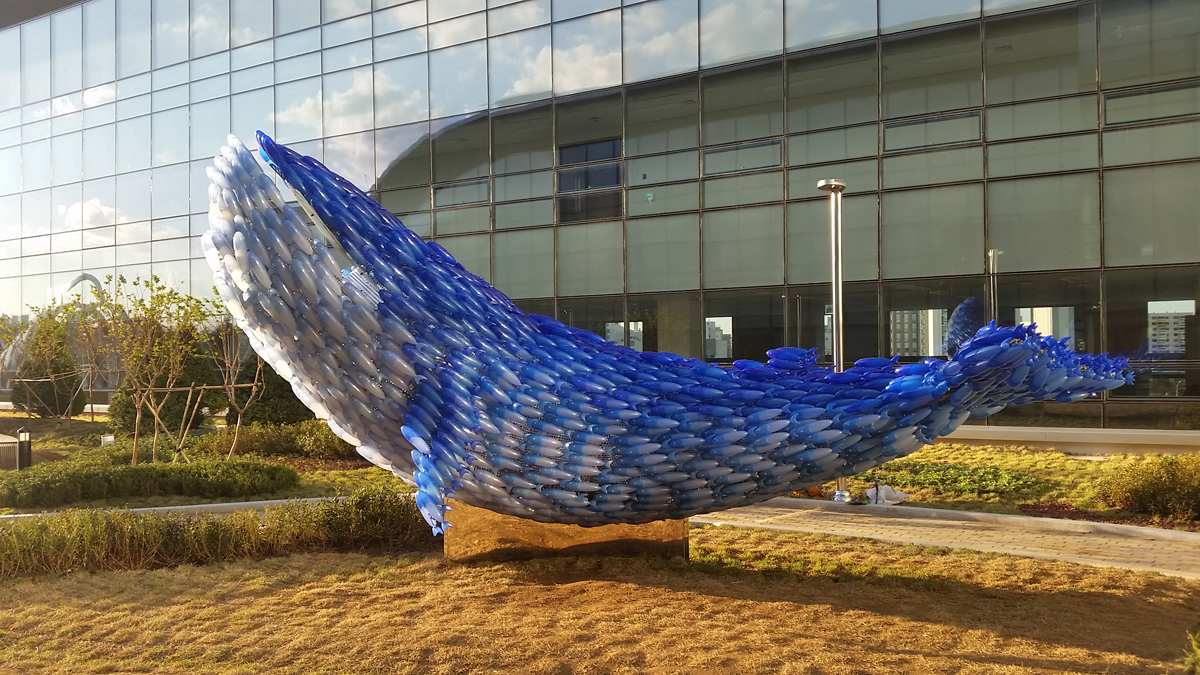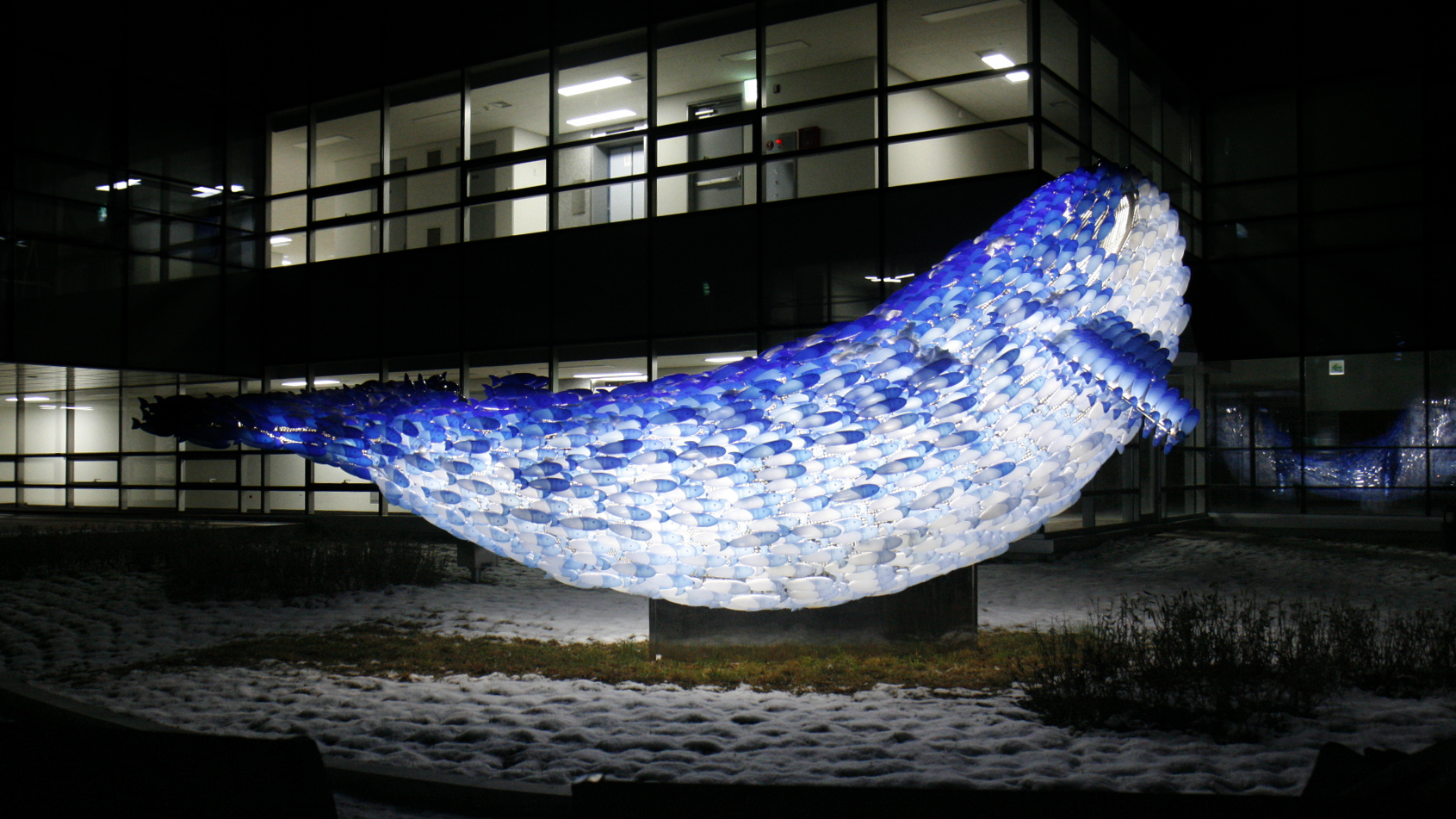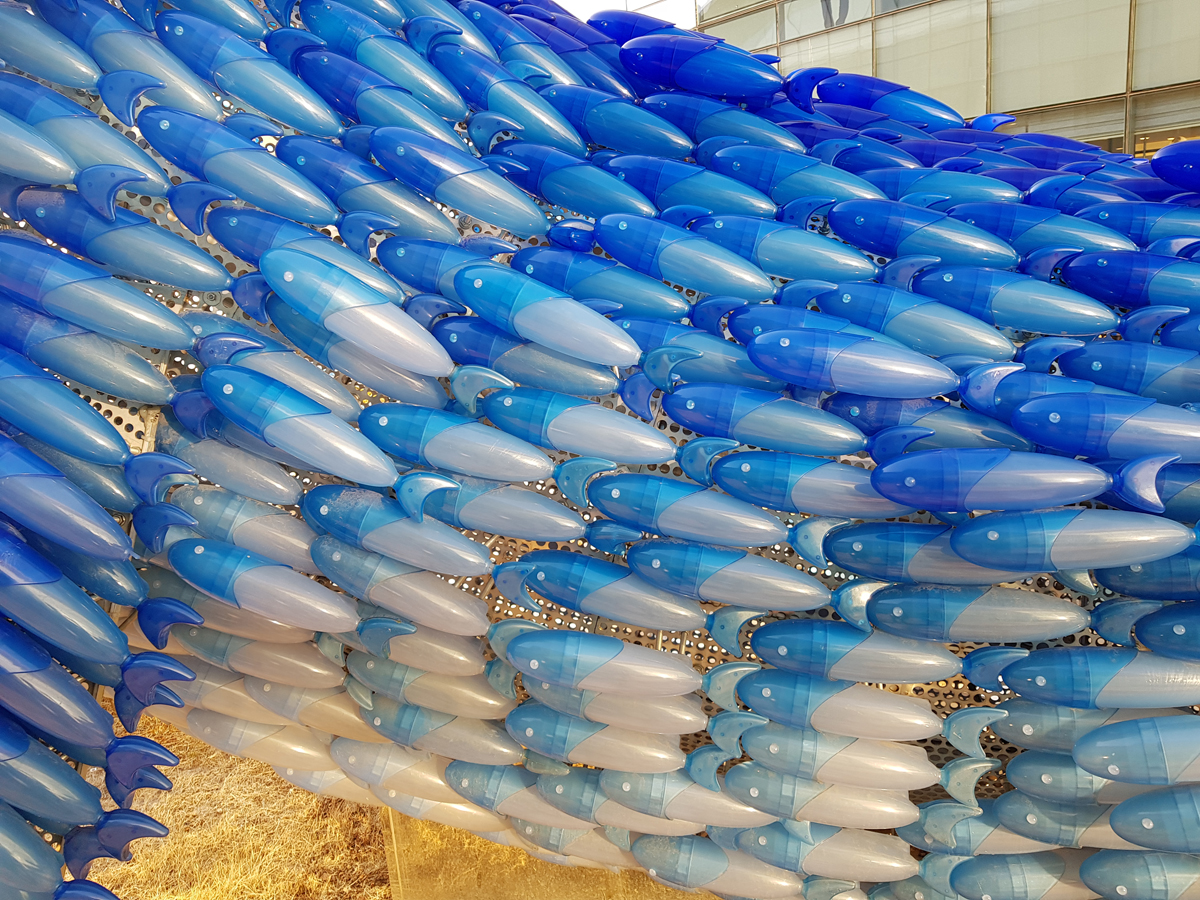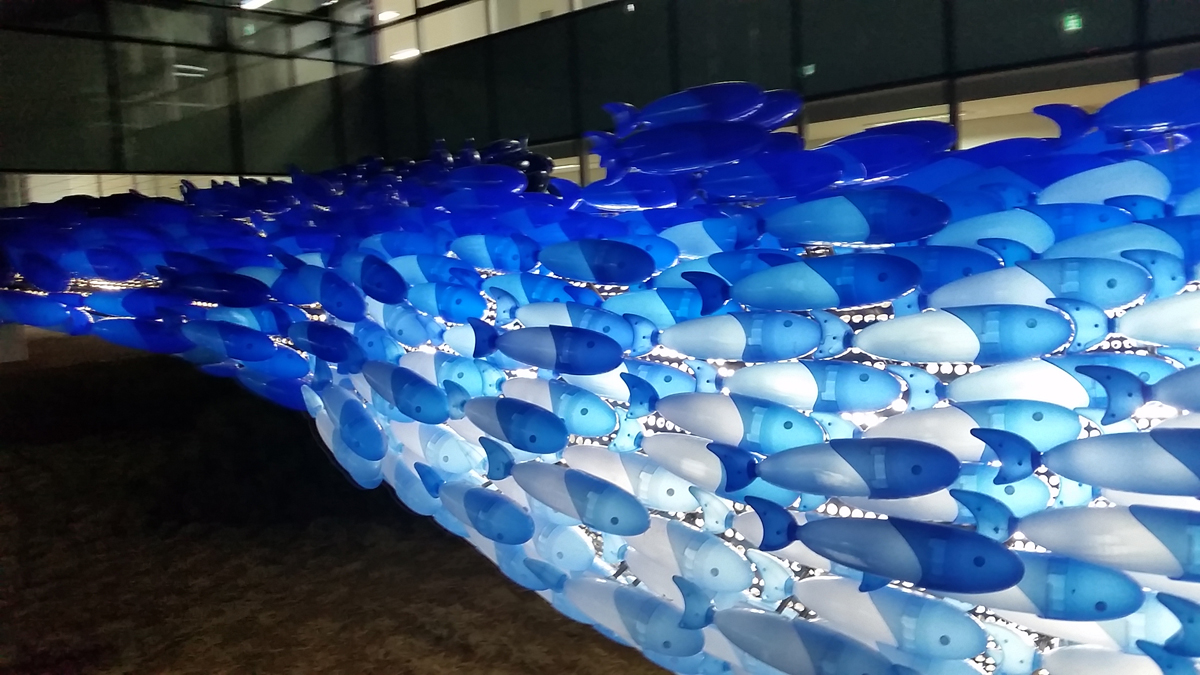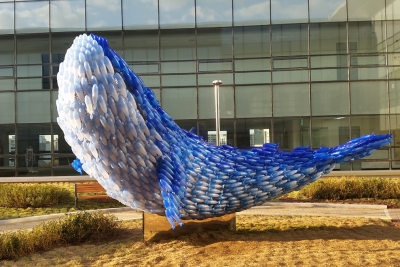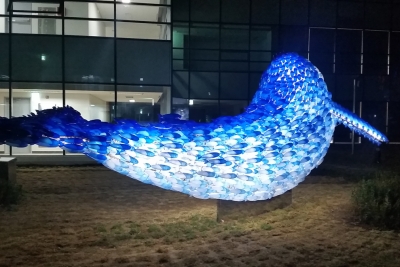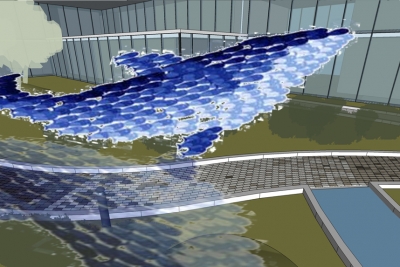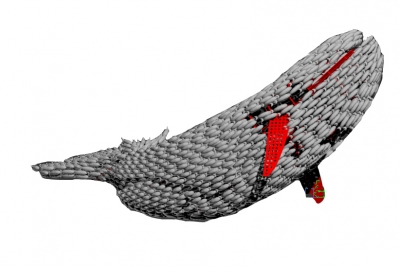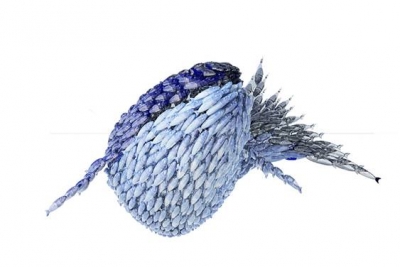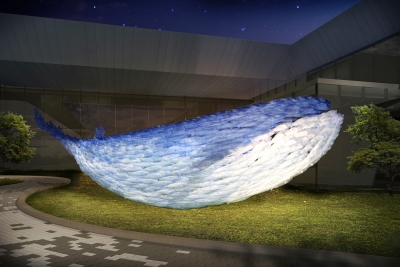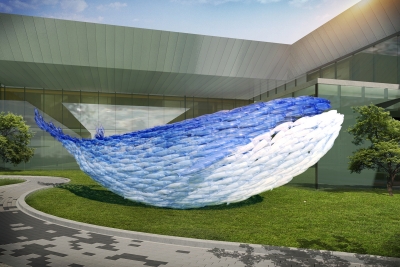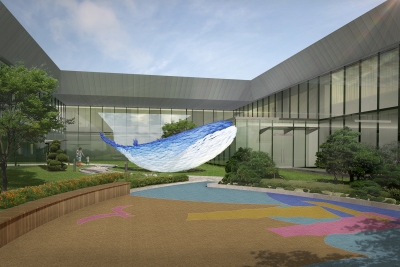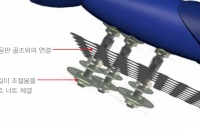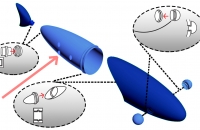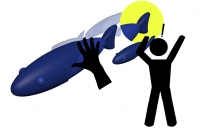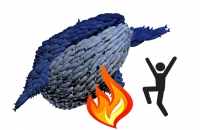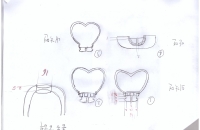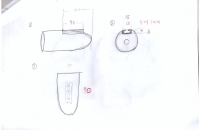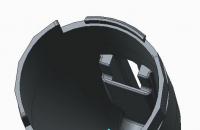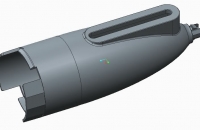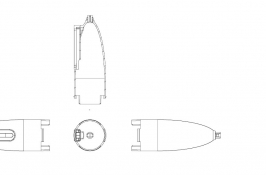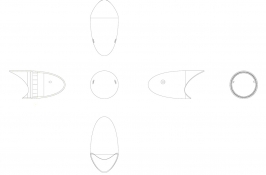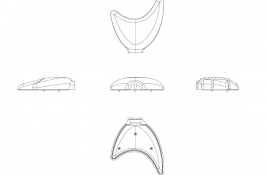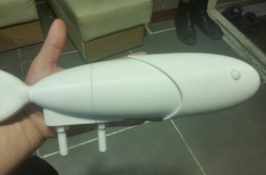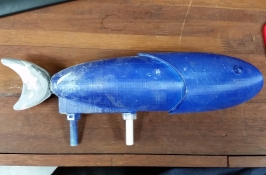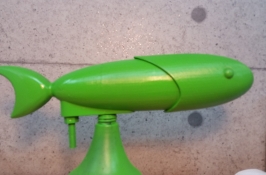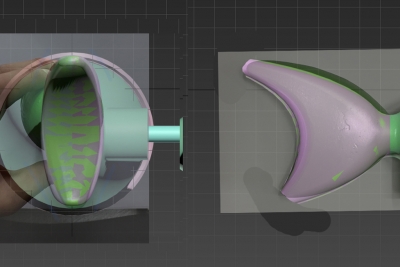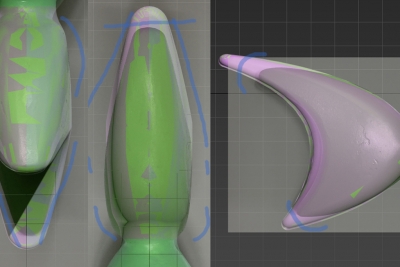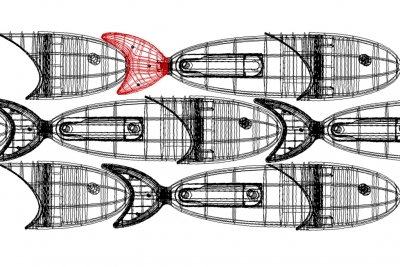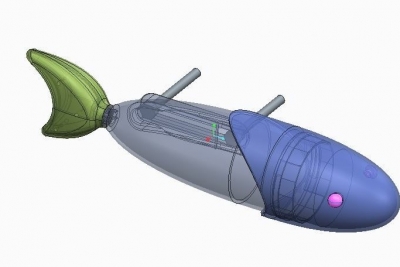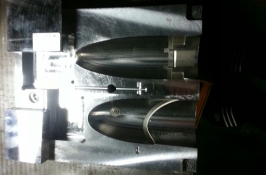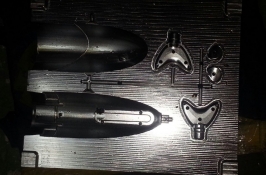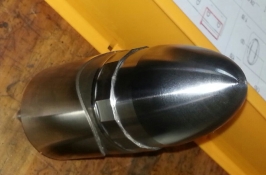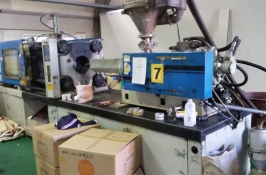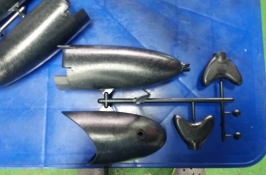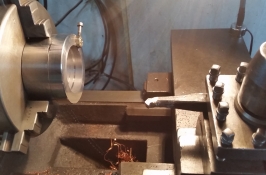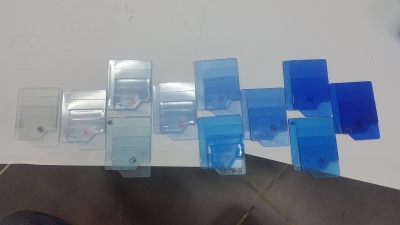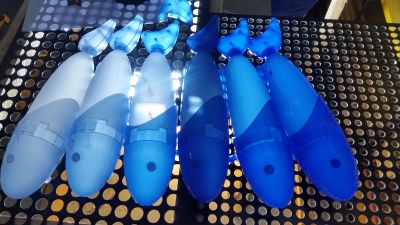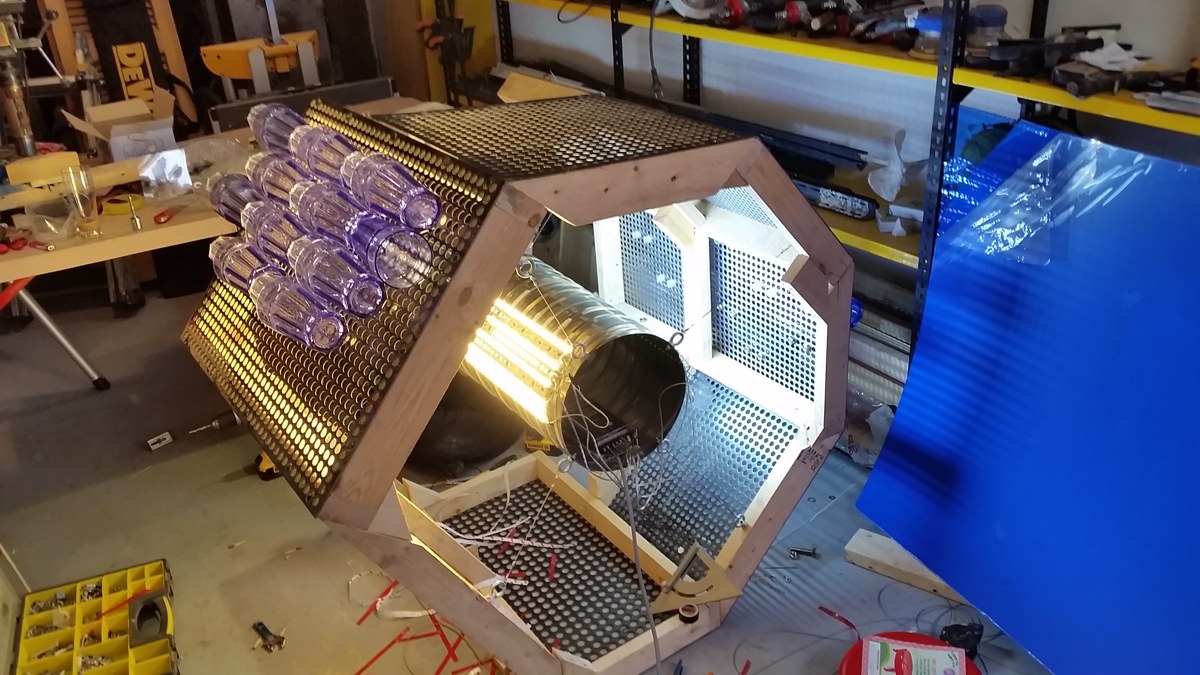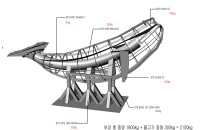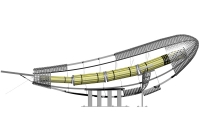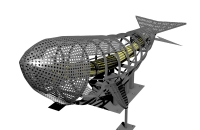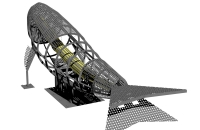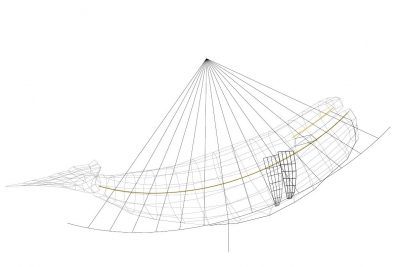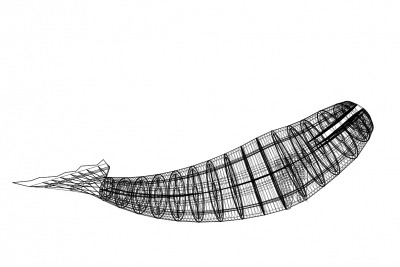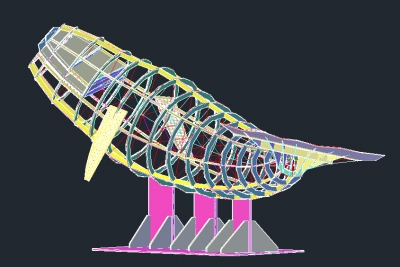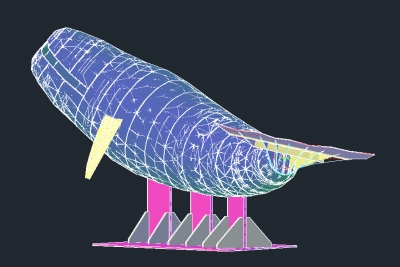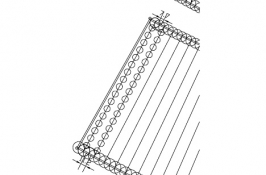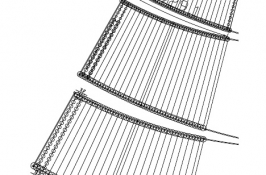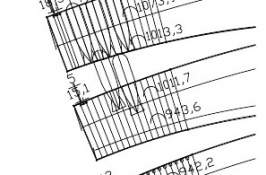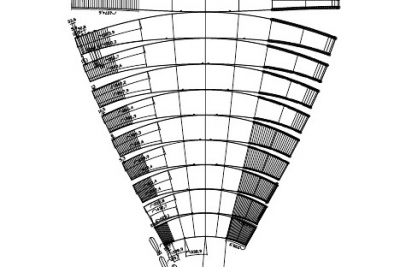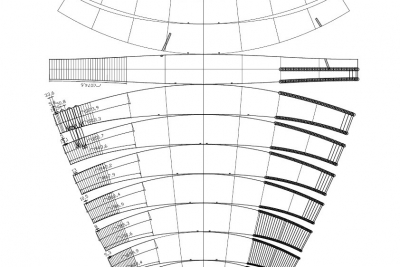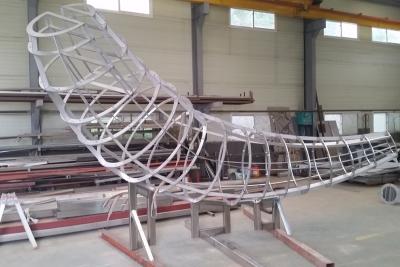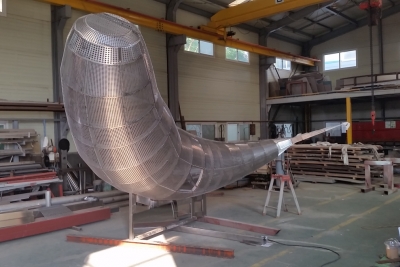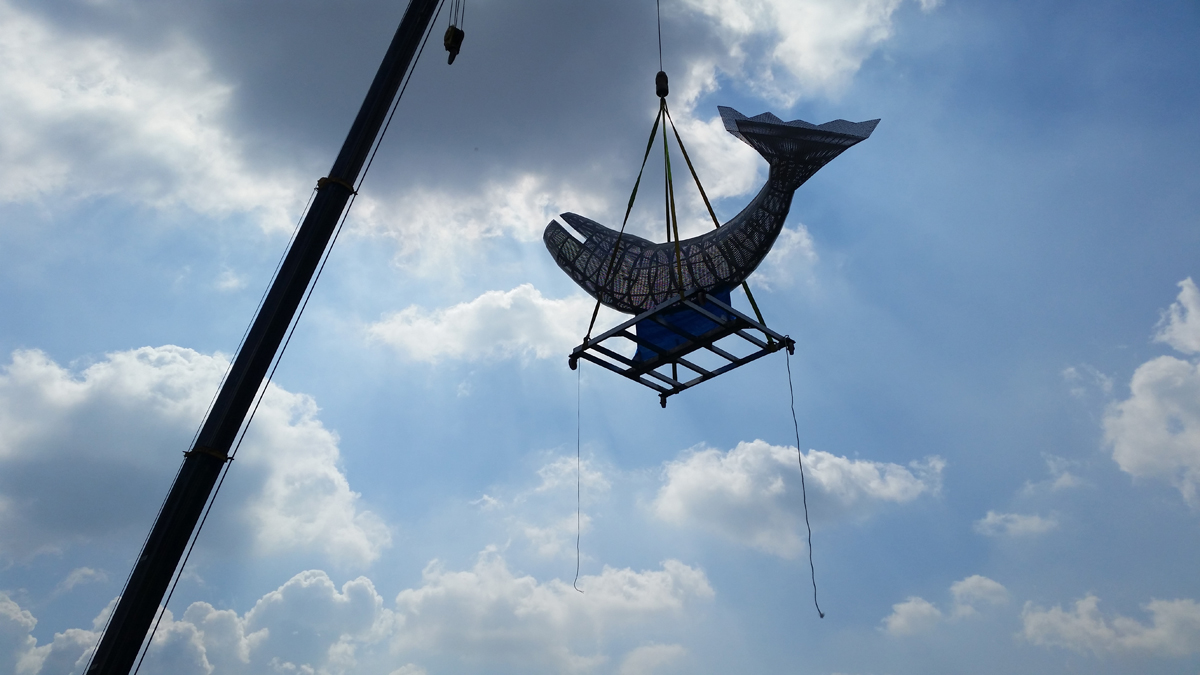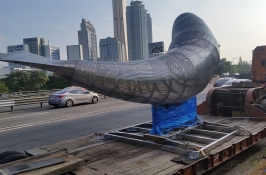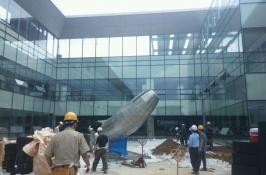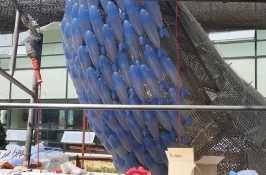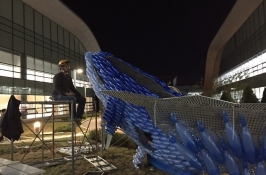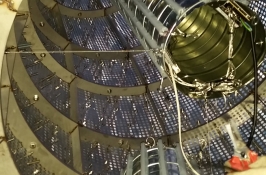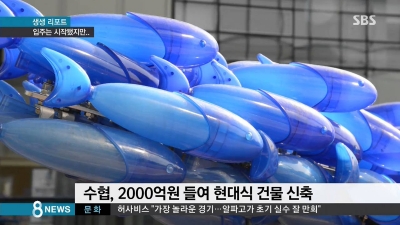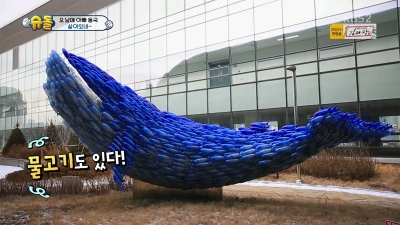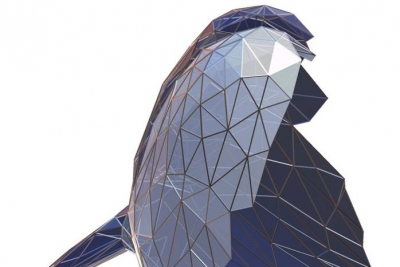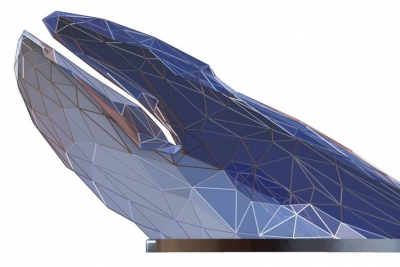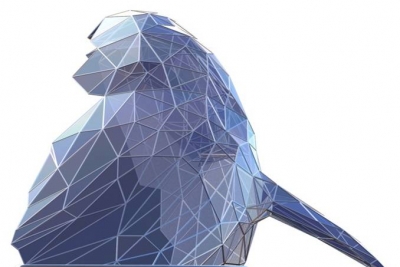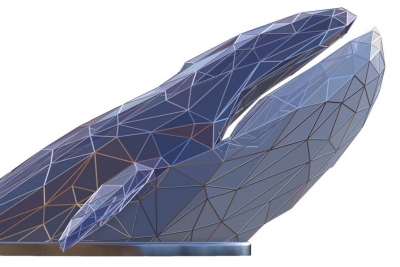a symbolic sculpture of the largest fish market in Korea
installed in the Noryangjin Fish Market /
674, Nodeul-ro, Dongjak-gu, Seoul, Republic of Korea
sculpture, 2015
l 9,000 x w 3,200 x h 4,000 mm (l 9.8 x w 3.5 x h 4.4 yd)
stainless steel, polycarbonate 1303AH-10 LUPOY, LED lights,
Master Batch, light diffusing pigment, blocking UV pigment
The Noryangjin Fish Market is operated by over 2,000 employees and merchants for 24-hours a day, distributing marine products from all over the country. This public sculpture located on the roof of the newly constructed market building is composed of many small fish shapes that float in unison to form the outline of a giant whale. Each little fish symbolises all of the workers who illuminate this place, and the whale as a whole stands as a representation of the fish market.
The blue colour of the fish illustrates the cleanliness and the freshness of all the produce distributed here as well as that of the honest labour and sweat of the workers. The light emitted by the sculpture through a particular light diffusing pigment and material represents the unceasing energy of the fish market that radiates 24 hours a day, 365 days a year. When I won the art contest, I made this work. As an artist of the work, I worked on designing the sculpture and modelling. I also worked with two experts on fish injection and frame welding. Since then, I’ve installed fish with two of my employees and two part-time employees, one of whom Lighting and electrical equipment are installed. After this installation, The Fisheries Market Office commissioned me to design a more massive sculpture.
Sketching the Idea
I was first inspired to design this piece, by the way, certain small species of fish travel in big schools to survive among their bigger predators. I imaged, “what if they can collectively form a perfect unison in the shape of a whale?” I made my first sketch in pencil and then started to model it in Autodesk 3DS MAX. I ran a simulation wherein which the school of fish, in shape of a large whale as a whole, was travelling along a curved, bending path.
Modelling the Fish
When I planned this work, four of the most important factors in determining material and shape were: The size of a fish is large and streamlined form, making it difficult for children to climb easily. When people go up to the sculpture, it does not break because it is made of hard stainless steel. It is difficult for people’s hands to get caught because of the wide gap between the fish, and fish are wired so that people can easily pull out their hands. Even if people hit the head or body of sculpture, they are not likely to get hurt because it is a streamlined form. Natural Fireworks are not set on fire, and no harmful smoke is generated even when chemical fires are set on fire.
Besides, each unit of fish, cast from a single mould, had to be adjustable so that, depending on its location concerning the whole whale, it would be able to twist and turn its head and tail. Also, they required a flexible joint system that allows for adjustment of back/forth and up/down positioning – this would allow them to fit tightly with one another during assembly and result in as little gaps as possible between the fish and avoid having to overlap the fish.
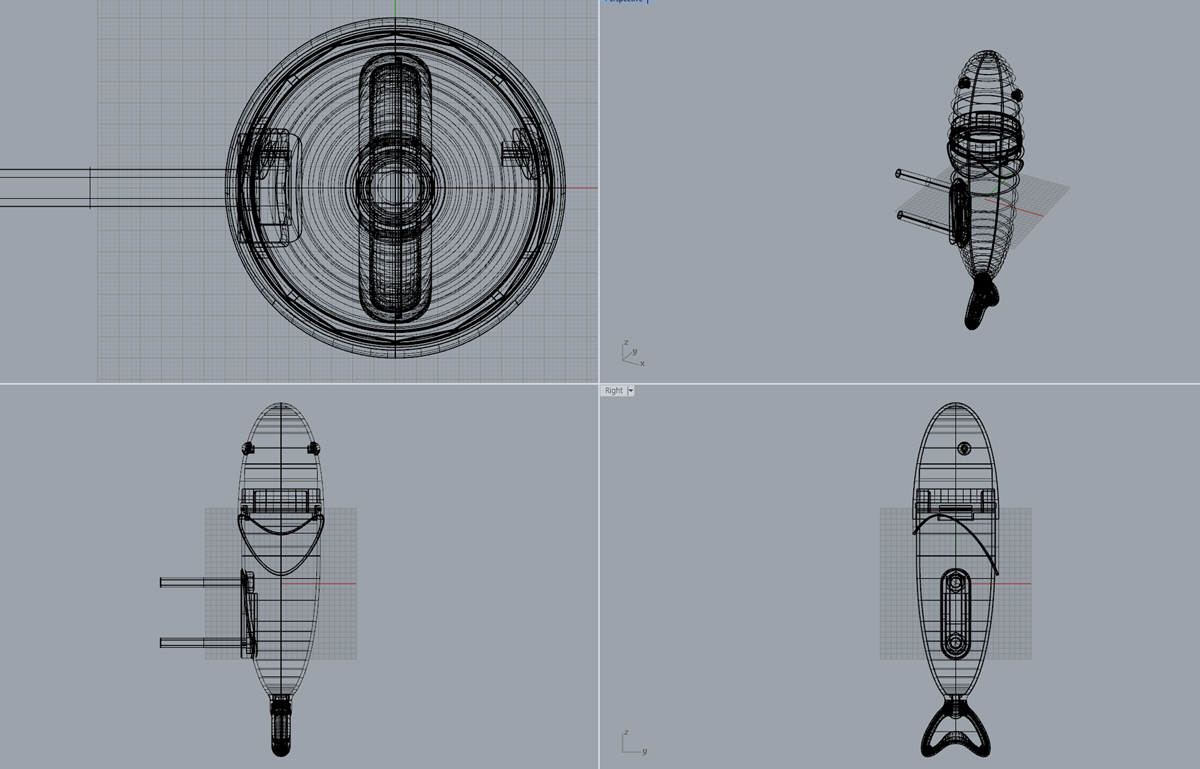
The prototype fish was 3d printed after the MAX file was converted to NURBS format. Many alterations were made afterwards, repeating the process of fixing parts with epoxy putty, scanning the model with a 3d scanner and editing on Rhino software. After the fish model was somewhat suitable, the final details were edited on Pro-Engineer and were sent to be made into a metal mould.
3D Printing, Remodeling and Scanning
The first cast fish from this mould had a weak point between the body and tail, and the metal mould had to be edited and made once more to perfect the fish model. Once assembled, each unit of fish needed a joint to hold the head/body/tail in place. To solve this issue in the mould making stage would require dual moulds and spring moulds which are expensive and time-consuming. In the end, we made a separate bracket to be added on the cast fish and used a lathe machine to cut out the holes to fit the brackets afterwards.
Injection Molding
At the factory that I rented an injection machine, I mixed the pigments, polycarbonate and UV barriers and injected the fish myself.
Choosing the Material
The fish had been able to emit the light coming from within the metal frame of the whale’s body. Around 90 colour pigments were mixed and experimented with, resulting in 24 different colour samples of polycarbonate. Twelve final colours were selected. A structure was made to test the warmth of the source light concerning these polycarbonate colours. A 4200K light source was selected so that the result would not look too cold.
Constructing the Frame
To make a frame that looses as little light as possible while being able to withstand a weight of 100kg upon each bold/nut mount, we performed various tests. Six different thicknesses of metal from 0.5mm to 3mm and four different diameters for holes were tested for strength and light permeability. This time was before the final fish was cast from the mould, so we used a blue plastic cup made from a similar polycarbonate material. The frame was modelled in CAD and laid out flat on a blueprint, which was used to determine the position of the perforations.
The positioning of the perforation was one of the most difficult parts of this project. Each hole would determine the position of each fish. Therefore, if the fish were not to collide with one another yet be capable of wrapping the whole whale frame in a zigzag pattern, the position of the holes of the frame had to be very specific. On top of this, the whale frame was curved to one side, so each row of holes had to be calculated separately. We came up with a formula to calculate the position of each row of holes about the previous and following rows, taking into consideration the proportionate area covered by the fish to the entire surface area of the frame. Comparing the perforation blueprint and the 3d model, small adjustments had to be made. This took a lot of time.
Installing the Sculpture
Because of changes to the construction schedule of the new building, the frame of the whale had to be installed first, before attaching the fish to the frame. The frame was to be placed in the middle of the rooftop garden. The actual weight of the frame was 1.2 tons, but since it had to be raised very high up in a narrow space, I used a 100-ton crane. This work was operated before the grass was planted in the garden, so we suffered through a lot of sand dust throughout the installation. After sundown, we used a beam projector to project an image of the 3d model where the borderlines of different groups of fish with different colours were marked beforehand. We tied strings on the actual frame to indicate the said borders. Afterwards, the polycarbonate fish could start to be attached one by one. This work required one person to go inside of the metal frame of the whale to hold a nut in place. Another person would then tighten the bolt with the fish from outside. To get the desired form, we repeated this process many times, altering the bolt length.
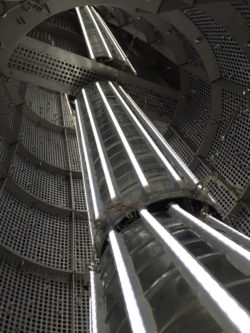
Lighting
I conditioned the LED lights, along with the heat sink plane, to be waterproof. To emit light evenly throughout the sculpture, six different sizes of stainless steel pipes, covered with LED lights, were suspended with wires inside the frame. The wires were made to be movable so that a person could open up the frame and access the interior for future maintenance. The head and the fins of the whale had a movable structure, so the light had to be installed within those structures. Lastly, the door was made, and after a final checkup of the fish, the installation was complete.
Introductions from News and TV Show Program
Further Proposals
Recently, I made further proposals for additional work using solar panels upon request from the fish market’s management office. The proposal received a positive reaction, and I am waiting for confirmation on the new installation.

